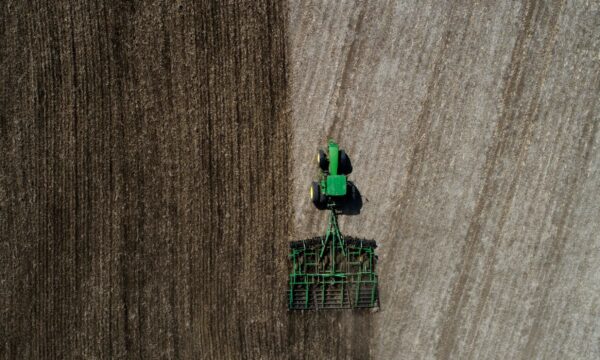
New salt-tolerant varieties of rice will help Japanese farmers in tsunami-affected areas © Molly Des Jardins, Flickr, CC BY-NC-ND 2.0 license
The devastating tsunami that hit northeastern parts of Japan last March left thousands of acres of farmland damaged by saltwater. Much of this agricultural land was paddy fields, which were left with up to 25 cm of sand and mud deposited and highly saline conditions resulting from evaporation of the seawater.
Scientists from the Sainsbury Laboratory in Norwich, UK, in collaboration with Iwate Biotechnology Research Centre in Japan, are screening rice varieties to find those that can grow in salty conditions. They are doing this using their new MutMap method, which provides a much quicker way of finding new crop varieties than traditional breeding methods.
In the past it has been slow to use genetics to identify individual plants that have the genetic code for desired traits because it is often a combination of many different genes that leads to these traits. The traditional way of creating a plant that has specific features such as drought tolerance or a high yield is to back-cross wild plants that have the required features until a suitable cultivar with the right combination of genes is obtained. This can take several years. The MutMap method speeds up the process because it requires only one crossing of the plants.
The researchers have already performed this technique to develop rice plants that exhibit semidwarfism (a trait that is useful in rice agronomy as small plants are less prone to falling over). Now they are screening rice plants for salt tolerance, which will be introduced into tsunami-affected paddy fields in Japan. An example of how new cultivars are developed using the MutMap method is given below:
Start with a rice cultivar that is already adapted to growing in local conditions and sequence its DNA
Create genetic mutants of this cultivar
Select a mutant that has the desired trait (e.g. salt tolerance)
Cross with original cultivar
Sequence DNA of the progeny that have the desired characteristic
Find differences in genetic code between original and new plants – the regions of DNA that are different between the plants can be used as markers to identify salt-tolerant plants
There is still work to be done to develop the MutMap method for screening other cereal crops such as wheat and maize because these species have much larger genomes than rice. However, this simple and quick way of developing new breeds of crop is very promising, particularly in enabling farmers to respond to dramatic changes to the environment. It means that new crop varieties can be developed and ready to be planted in a year or two rather than ten years.
Sources:
Abe et al. (2012) Genome sequencing reveals agronomically important loci in rice using MutMap. Nature Biotechnology doi:10.1038/nbt.2095
Sugawara et al. (2011) Initial field survey report of the 2011 East Japan Tsunami in Sendai, Natori and Iwanuma Cities. UNESCO-IOC International Tsunami Survey Team. Available from http://walrus.wr.usgs.gov/news/UNESCO_ITST_FinalReport100711.pdf
The Sainsbury Laboratory (2012) Science to help rice growers affected by Japan’s tsunami. Available from http://www.tsl.ac.uk/mutmap.html
1 Comment
Leave a Reply
Related News & Blogs
Soil health: why it’s important and how to protect it
This blog was originally uploaded on the CABI BioProtection Portal Soil is the foundation of agriculture and sustains life on earth by providing nutrients, clean air and water. Human activities can damage soil health and, therefore, impact entire ecosy…
27 December 2023





[…] communications are important, why not find out more about the changes that had to be made to Japanese crops after the tsunami or how wet weather triggered fungal outbreaks in […]